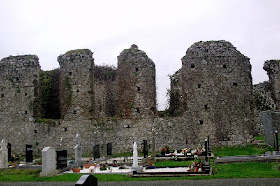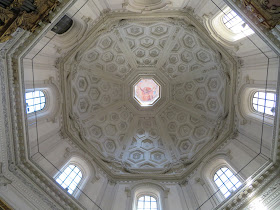The following is from Fr. Thomas Walsh's
History of the Irish Hierarchy, published in New York in 1854, chapter xlviii, at p. 479 and following:
The Ruins of Clane Abbey
Clane gives its name to the barony. Saint Ailbe of Emly is said to have presented St. Sinell senior with a cell in which he had lived himself for some time at Clane. Sinell was the son of Kinfinnain and grandson of Imchad of the royal blood of Leinster. It is not known how long Sinell remained at Clane nor is the year of the donation by Ailbe of Emly ascertained. It may have been about the year 500. As Clane was not then a permanent establishment, Sinell moved to Killeigh where he established a monastery which in course of time became very celebrated. St. Sinell, the friend of the great Ailbe, is styled senior to distinguish him from Sinell who was a relative of his and a priest and who lived with him at his monastery of Killeigh. Having lived to a good old ago he died on the 26th of March AD 549.
Franciscan Friary was erected in Clane some time before the year 1266 by, it is said, Gerald Fitzmaurice, lord Offaley.
AD 1546 a provincial chapter was held here.
In the 24th of Henry VIII this abbey was given with its possessions forever to Robert Eustace and John Trevors at the annual rent of 2s 4d.
O'Sullivan relates that Eustace saw, as if in a vision, some one threatening him and foreboding destruction to himself and to his family should he consent to accept of church property. Be this as it may, James Eustace, the son and heir of the viscount Roland, was driven by the English from his patrimony and died in exile. Some Irish peers accepted of grants of property belonging to the church but generally they did not convert it to their own use. The annals of the four Masters in praise of Pierce Butler observe that he did not possess one penny of the property of the church of God by right of Pope or Prince.
In the parliament held AD 1556 the grants of church property made to laics during and after the reign of Henry VIII are confirmed and with the approbation of Pope Paul IV. Fourteen abbots sat in that parliament. Six or seven heads of religious orders are stated to have assented to the act.

































































